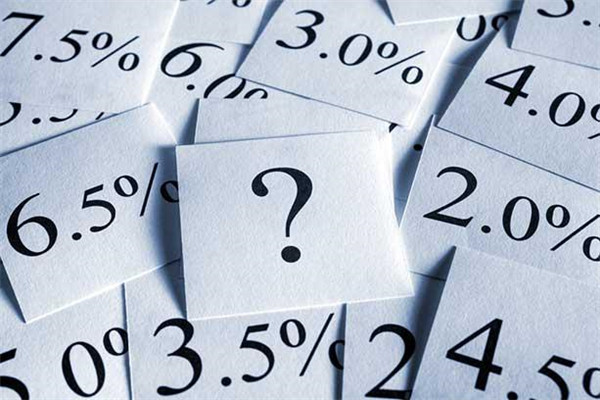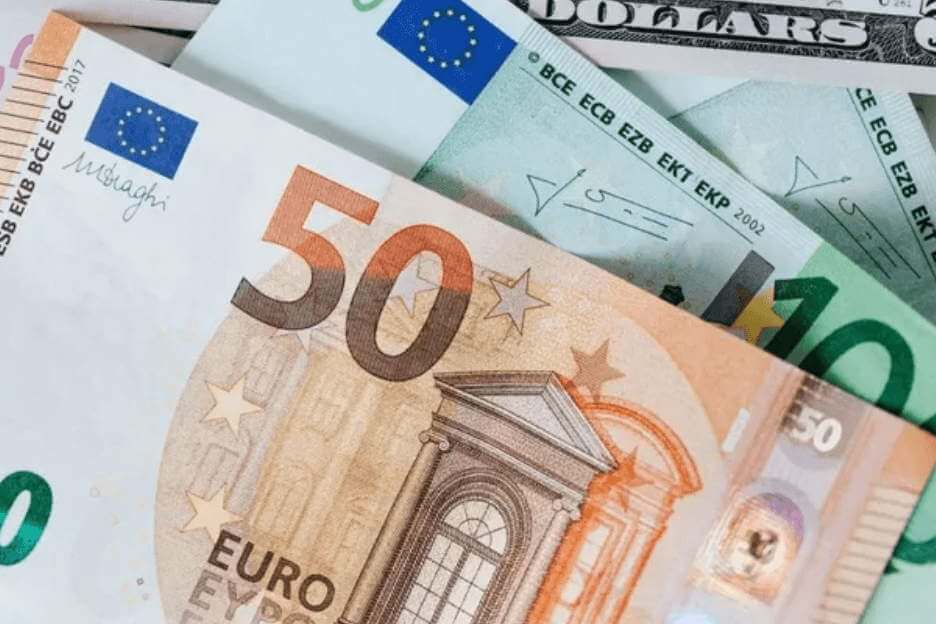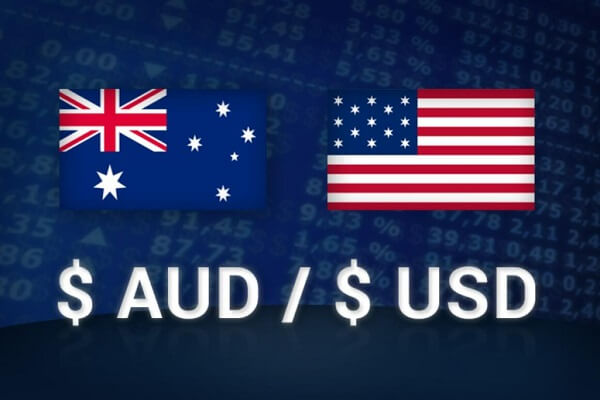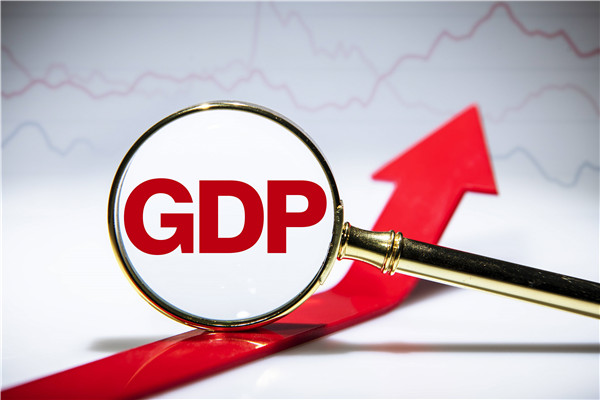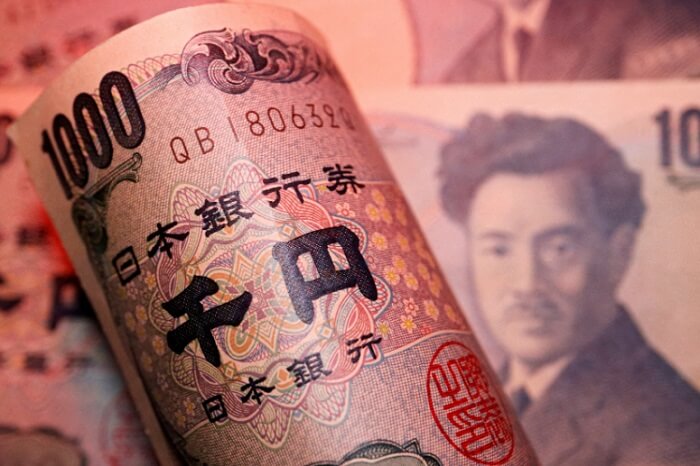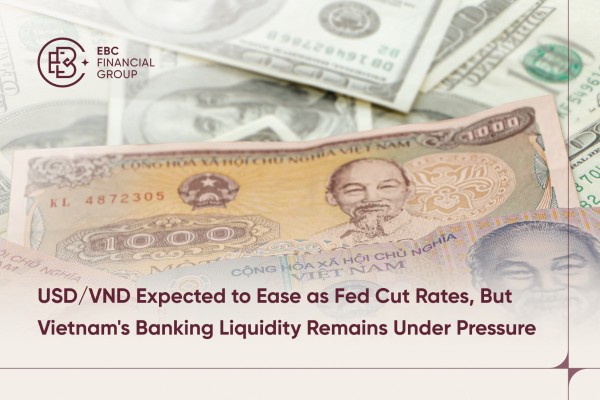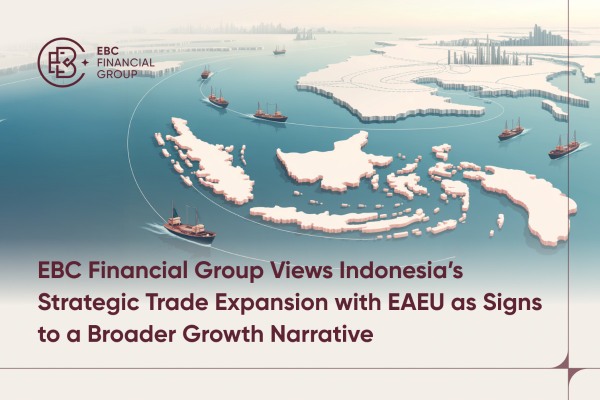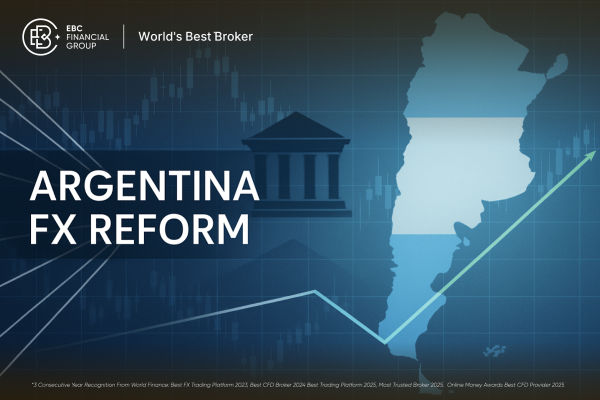There is a close internal connection between the interest rate market and the
foreign exchange market, and a country's interest rate level directly affects
the exchange rate level of its own currency. This article will delve into how
interest rates affect exchange rate fluctuations.
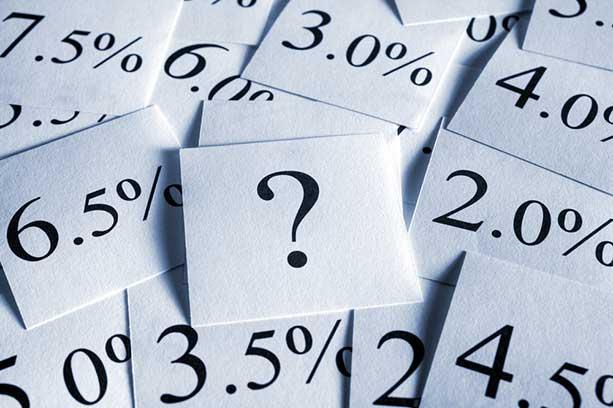
The official interest rate level of a country is controlled by its currency
management authority, and changes in one country's interest rate relative to
another country's interest rate can cause fluctuations in the exchange rate.
Most transactions in the foreign exchange market are spot transactions, also
known as spot foreign exchange trading, which refers to a trading behavior where
both parties handle delivery procedures on the same day or within two trading
days after the foreign exchange transaction is completed. Spot foreign exchange
trading is the most commonly used trading method in the foreign exchange market,
accounting for the majority of total foreign exchange transactions. This is
mainly because spot foreign exchange trading can not only meet the buyer's
temporary payment needs but also help the buyer and seller adjust the currency
proportion of foreign exchange positions to avoid foreign exchange risk.
Forward foreign exchange trading, also known as futures trading, refers to
forward foreign exchange trading where the delivery date is two business days
after the transaction. In forward foreign exchange transactions, foreign
exchange quotations are more complex. Because the forward exchange rate is not a
realized exchange rate that has already been delivered or is currently being
delivered, it is a prediction of future exchange rate changes based on the spot
exchange rate. Forward exchange rates include two factors: spot exchange rates
and future expectations. When the forward exchange rate of a currency in the
foreign exchange market is higher than the spot exchange rate, it is called a
premium; when the forward exchange rate of a currency in the foreign exchange
market is lower than the spot exchange rate, it is called a discount.
Spread Arbitrage
The foreign exchange market is composed of two factors: "buy" and "sell",
both of which are indispensable. When you buy and sell currency pairs in the
foreign exchange market, it means that you are both buying and selling a certain
currency.
In theory, if you engage in cash and foreign exchange trading, you can
directly deposit it in the bank to generate interest. It's equivalent to lending
money to a bank, which needs to pay you interest at a certain rate. The amount
of interest you receive depends on how long you have deposited the money in the
bank. The longer the time, the higher the interest rate, and the more
interest.
In the long run, the volatility of the foreign exchange market is closely
related to the changes in interest rates between the two countries, and the
currencies of countries with higher interest rates are often more attractive.
But there is no free lunch in the world. You can really use the difference
between the interest rates of the two countries to carry out arbitrage
operations. When you buy a currency with a high yield, you can get higher
interest rates. At the same time, you will also face the risk of fluctuations in
the foreign exchange market.
The interest rate parity Theory believes that in the case of differences in
interest rates between the two countries, funds will flow from low-interest
countries to high-interest countries to seek profits. But when comparing the
returns of financial assets, arbitrageurs not only consider the returns provided
by the interest rates of the two assets but also consider the changes in returns
generated by the exchange rate fluctuations of the two assets, namely foreign
exchange risk. Arbitrageurs often combine arbitrage with swap trading to avoid
foreign exchange risk and ensure no loss. The result of a large number of swap
foreign exchange transactions is that the spot exchange rate of low-interest
country currencies floats downward and the forward exchange rate floats upward;
the spot exchange rate of high-interest country currencies rises while the
forward exchange rate falls. The forward spread is the difference between the
forward exchange rate and the spot exchange rate, resulting in a forward premium
for low-interest country currencies and a forward discount for high-interest
country currencies. As the carry-on arbitrage continues, the forward spread will
continue to increase until the yields provided by the two assets are completely
equal. At this time, the carry-on arbitrage will stop. The forward spread is
exactly equal to the spread between the two countries; that is, interest rate
parity is established.
The interest rate parity theory means that you buy low- and high-yield
currencies in the same way. For example, if the US dollar interest rate is 1.5%
and the euro interest rate is 0%, you buy the US dollar, sell the euro, and
prepare to hold the US dollar for two years. After two years, you earn a US
dollar interest rate of 1.5%. However, the theory of interest rate parity points
out that in the past two years, the euro has appreciated relative to the dollar
because, during this period, arbitrageurs will carry out a large number of swaps
to avoid foreign exchange risks and buy a large number of euros in the forward
market, resulting in the rise of the euro forward exchange rate. Because of
this, two years later, although the US dollar has an interest rate of 1.5%, its
value relative to the euro has decreased.
In addition, the yield of a country's treasury bond often reflects the
country's long-term interest rate expectations. When the price of a country's
treasury bond rises, the yield will fall, and when the price of a treasury bond
falls, the yield will rise. Arbitrageurs often refer to the yield of Treasury
bonds when conducting arbitrage operations on two currencies. Arbitrageurs often
search for relatively stable and less volatile currency pairs and then carry out
arbitrage operations on these currency pairs, buying high-yield currencies and
selling low-yield currencies.
Treasury bond yield and exchange rate
In the foreign exchange market, the market interest rate is usually based on
the yield of a Treasury bond. Interest rates are divided into spot rates and
forward rates. The difference between spot rates and forward rates is that the
starting point of the interest date is different. The starting point of spot
rates is at the current moment, while the starting point of forward rates is at
a certain future moment.
Forward interest rates include spot interest rates and expected factors,
reflecting people's expectations of interest rates for a certain period of time
in the future.
The yield of a country's treasury bond often reflects its interest rate
expectation, that is, its forward interest rate. The expectation of interest
rates affects the fluctuation of the exchange rate. Exchange rate fluctuations
are very sensitive to changes in the yield curves of the two countries.
For traders of fixed-income assets, the yield curve of a Treasury bond is
very important. At the same time, the yield of treasury bonds also has an
important impact on the exchange rate.
The figure below shows the interest margin between the yield of the 10-year US Treasury bond and the yield of the 10-year Japanese Treasury bond. There is a close relationship between the interest margins of the two countries and the dollar and yen.
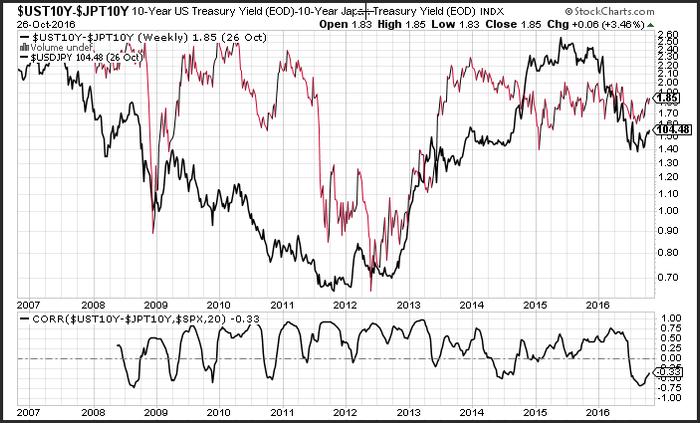
From the above figure, it can be seen that there is a correlation between the
yield spread between the two countries and the fluctuation of their currency
exchange rates. Although this correlation does not indicate that one variable
varies depending on another variable, it at least proves a certain connection
between the two. As can be seen from the above figure, the interest rate spread
and exchange rate are mostly positively correlated, and sometimes there is a
high degree of positive correlation.
The correlation coefficient ranges from -1 to 1, with negative values
representing negative correlation, indicating opposite trends in the two, while
positive values represent positive correlation, indicating consistent trends in
the two. The higher the absolute value of the correlation coefficient, the
higher the degree of correlation.
Central Bank and Interbank Lending Market Rate
The central bank is the monetary management authority of a country,
responsible for the formulation and implementation of the country's monetary
policy. The central bank can control inflation levels by adjusting interest
rates.
The inter-bank The term "interbank lending market refers to the interest rate
used by one bank to lend funds to another bank in the interbank market.
The US Federal Funds Rate refers to the interest rate in the US interbank
lending market, the most important of which is the overnight borrowing rate.
This change in interest rate can sensitively reflect the balance of funds
between banks. The Federal Reserve's targeting and adjusting the interbank
lending market rate can directly affect the cost of capital of commercial banks
and transfer the balance of funds in the interbank lending market to industrial
and commercial enterprises, thus affecting consumption, investment, and the
national economy.
The borrowing of federal funds is mainly carried out on a daily basis, and
the interest rate level is determined by the supply and demand of market funds,
with frequent fluctuations. This low interest rate and high efficiency (funds of
the day and no guarantee) make the trading volume of the federal funds
considerable, and the federal funds rate has become the most important
short-term interest rate in the American financial market. The daily offer rate
of federal funds is representative and an important parameter of the official
bank rate and the preferential rate of commercial banks.
The Federal Reserve can influence the change in the federal funds rate
through open market operations. When the Federal Reserve buys government bonds
on the market, it will inject liquidity into the market, thus reducing interest
rates. When the Federal Reserve sells government bonds, it tightens market
liquidity, thereby increasing interest rates.
Inflation and Interest Rates
Inflation refers to the continuous increase in prices over a period of time.
If the increase in prices is greater than the yield of a bond, bond holders
often abandon the bond, causing a decrease in bond prices and an increase in
yield. In general, an increase in inflation often boosts the stock market and
causes funds to flow into it.
Inflation-protected bonds (TIPS) are an indicator of future inflation
expectations, issued by the US Treasury Department and linked to the Consumer
Price Index (CPI). The biggest feature of inflation-protected bonds is that they
can eliminate the risk of domestic inflation in the issuing country and lock in
the actual yield. The principal of inflation-protected bonds is linked to the
CPI, and the principal portion is adjusted with the CPI index. The interest
calculated at a fixed coupon rate will vary with changes in the principal. For
example, if the yield of the 10-year US Treasury bond is 1.8% and the average
Inflation rate is 1.3%, then the actual yield of TIPS bonds is 0.5%. If
inflation continues to rise and the yield of the 10-year US Treasury bond
remains unchanged, the yield of TIPS will decline and the price will rise.
In addition, when inflation expectations rise, the Federal Reserve tends to
raise interest rates and reduce lending activities. When inflation expectations
decrease, the Federal Reserve tends to lower interest rates to boost the economy
and stimulate employment. An increase in interest rates will lead to a decrease
in the price of bonds or other fixed-income products, as the price and yield of
bonds move in the opposite direction. For investors holding bonds, as inflation
increases, interest rates also increase, which directly affects their earnings
situation.
Conclusion
Foreign exchange fluctuations are closely related to interest rate factors,
and interest rates are one of the most important factors in fundamental
analysis. Due to the existence of arbitrage activities, arbitrageurs often sell
low-yielding currencies and buy high-yielding currencies, resulting in exchange
rate fluctuations. There is a positive correlation between the interest rate
difference and exchange rate fluctuations between the two countries, and the
difference in interest rates between the two countries often drives changes in
exchange rates over the long term. Therefore, it is also necessary to monitor
the changes in interest rates in a country in order to trade its currency.
